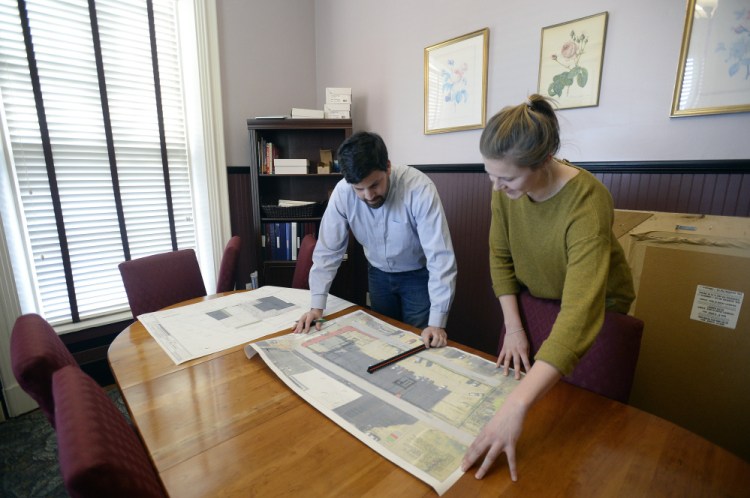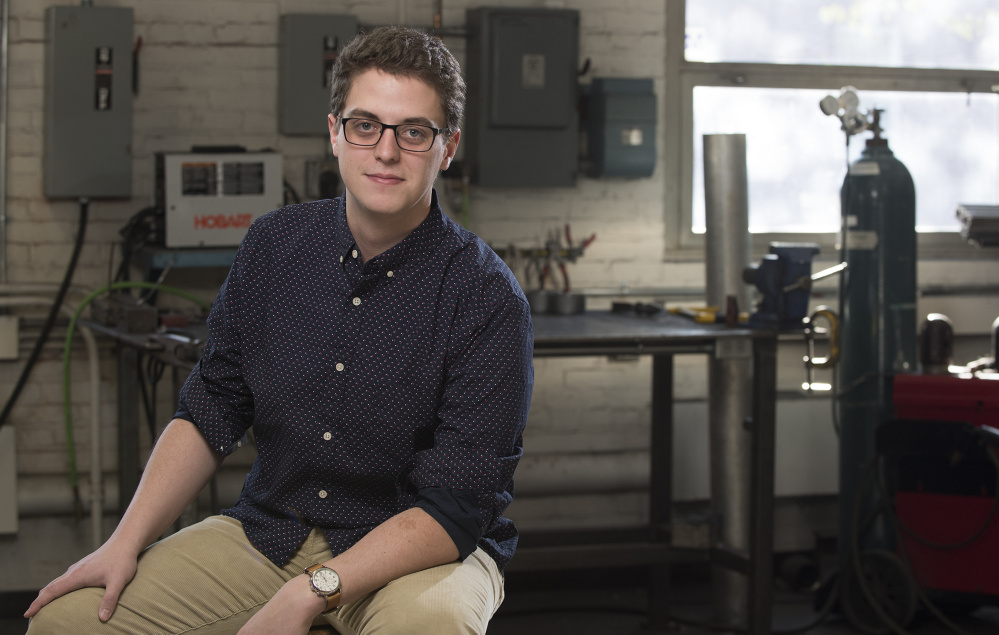Maine schools will not graduate enough engineers in the next decade to keep up with projected demand, and the shortfall could hamper the state’s economic growth.
That’s the consensus of engineering professionals and educators who believe that better pay outside Maine will lure graduates away while the state struggles to expand its capacity to train engineers here.
The Maine economy has gained more than 800 new engineering jobs in the last decade, expanding a foundation for high-tech industries, construction and manufacturing. Each engineer working in Maine right now adds $560,000 to Maine’s gross domestic product, according to a University of Maine analysis.
But the University of Maine System will produce only half the graduates needed to fill open engineering jobs in the next decade, mostly to replace people who have retired. Approximately 27 percent of Maine’s engineering workforce is 55 or older, said Dana Humphrey, dean of the University of Maine College of Engineering in Orono, laying the groundwork for impending shortages. With intense national competition for recent engineering graduates, Maine companies look primarily to the college to recruit new employees.
“If Maine thinks it can solve its shortage of engineers by bringing them in from other places, it is not going to happen,” Humphrey added. “It is going to have to produce its own.”
Though there is surging interest in engineering from students, the college is stretched to its limits. For the first time, the school had to turn away students from their preferred area of study in 2016, Humphrey said, and that trend is likely to continue.
“We are bursting at the seams,” he said.
‘WE NEED EVERY ENGINEER WE CAN GET’
A recent projection from the university for 2026 estimates Maine will create 810 new engineering jobs and need to replace 1,750 retiring engineers, plus others who leave the workforce, creating approximately 2,560 openings in all. At the same time, Maine is expected to produce 1,300 graduates to work in the state, leaving a shortfall of at least 1,260. Currently about 60 percent of Maine engineering grads stay in the state.
“We need every engineer we can get plus more, it doesn’t matter the discipline,” Humphrey said.
Rick McCarthy, executive director of the American Council of Engineering Companies of Maine, echoed Humphrey’s call for more engineering grads. He said areas like Boston and parts of California are booming, thanks in part to the critical mass of talented engineers.
“The best way to get those jobs here is to train them here, with the expectation that they stay,” McCarthy said.
But he acknowledges when it comes to pay, Maine lags behind many states. The average annual wage for engineering positions in Maine is $72,300, compared to a national average of almost $83,000, according to the U.S. Census Occupational Survey.

Gregory Smiddy, who’ll graduate from the University of Maine in May with a mechanical engineering degree, has a job lined up at Pratt and Whitney’s aircraft turbine plant in North Berwick.
Meagan Lewis, a 2016 University of Maine graduate, said higher salary was a reason she took a job as a systems engineer at MITRE Corp., a not-for-profit government contractor in Virginia. The company also had opportunities she couldn’t find in Maine, Lewis said. Many of her other friends from Maine also found jobs out of state.
“A few of them just wanted to get out of Maine, they had been there their whole lives, why not see a different part of the country,” Lewis said. “The ones who stayed wanted to stay closer to home.”
That’s Gregory Smiddy’s situation. Smiddy, who will graduate from the University of Maine in May, already has a job lined up at the Pratt and Whitney aircraft turbine plant in North Berwick. The job lets him work in aviation and keeps him in Maine, close to his family, Smiddy said.
“I really lucked out; I couldn’t be happier with my position once I get out of school,” Smiddy said. “To be able to stay in Maine and have a job I really like is something else, it is amazing.”
PREPARING FOR THE FUTURE
UMaine is the dominant source for engineering degrees in the state, although some are given at the University of Southern Maine and Maine Maritime Academy in Castine. Enrollment at UMaine’s engineering school has increased 74 percent since 2001. Humphrey said approximately 1,800 undergraduate and 200 post-graduate students attend the engineering college. An incoming freshman class has 450-500 students.
The university has invested in state-of-the-art research labs like the Advanced Structures and Composites Center, Humphrey said, but its five academic buildings are aging, cramped, and have laboratory space that is functionally obsolete.
“Our buildings do need to be upgraded, modern facilities to be compatible with how we teach today, not 20 years ago,” Humphrey said.
The University of Southern Maine has approximately doubled its enrollment in the past decade to 200 and expects continued growth, said Mariusz Jankowski, chair of the school’s engineering department.
“Both institutions recognize the need for increased investment in engineering,” Jankowski said. “I would certainly hope that message gets across, and the solution is that we use the opportunity to invest in both institutions, when the decision is made to increase access to engineering in Maine.”
That infrastructure is critical to producing engineers in a competitive landscape.
“If the University of Maine is not able to pump them out or is compromised because of a lack of capabilities or other resources, it will further compromise our ability to hire those engineers and hopefully keep them in the state of Maine,” said Chuck Padera, president of Kleinschmidt, a 140-employee firm based in Pittsfield with offices in seven states and two Canadian provinces. “Right now, if you are graduating from a qualified engineering school, you get to pick where you want to go; the world truly is your oyster.”
‘THE REAL QUESTION IS DEMAND’
The U.S. Bureau of Labor Statistics predicts the economy will add 67,200 new architecture and engineering jobs, a 3 percent increase, by 2024. According to a 2016 survey from human resources firm ManpowerGroup, 82 percent of companies reported having difficulty finding engineers, even though 95 percent said they were planning to hire in 2016. The survey pointed to similar issues facing Maine, such as a workforce facing retirement age and a need for more education and training of new engineers.
“It is clear the demand for engineers is growing very, very rapidly and has been growing over the past number of years across the country,” said David Raymond, president and CEO of the American Council of Engineering Companies. Expanded demand for engineers in new industries like high tech and biotechnology is helping drive the need to produce more graduates across the country, Raymond added.
“The real question is demand,” Raymond said. “If demand is sustainable, then the institutions will find a way to fill it.”
In a busy market, small firms like Acorn Engineering in Portland have a particularly tough time recruiting new hires. A glut of engineers during the recession turned into a shortage as the economy improved, Acorn owner William Savage said. His company wasn’t advertising open jobs, but he recently hired a University of Maine graduate who sent a handwritten letter expressing interest in the company’s watershed restoration work.
“Everyone is trying to hire engineers; we can’t pass up that opportunity. We hired him on the spot,” Savage said. “That is the mentality right now.”
Send questions/comments to the editors.





Success. Please wait for the page to reload. If the page does not reload within 5 seconds, please refresh the page.
Enter your email and password to access comments.
Hi, to comment on stories you must . This profile is in addition to your subscription and website login.
Already have a commenting profile? .
Invalid username/password.
Please check your email to confirm and complete your registration.
Only subscribers are eligible to post comments. Please subscribe or login first for digital access. Here’s why.
Use the form below to reset your password. When you've submitted your account email, we will send an email with a reset code.